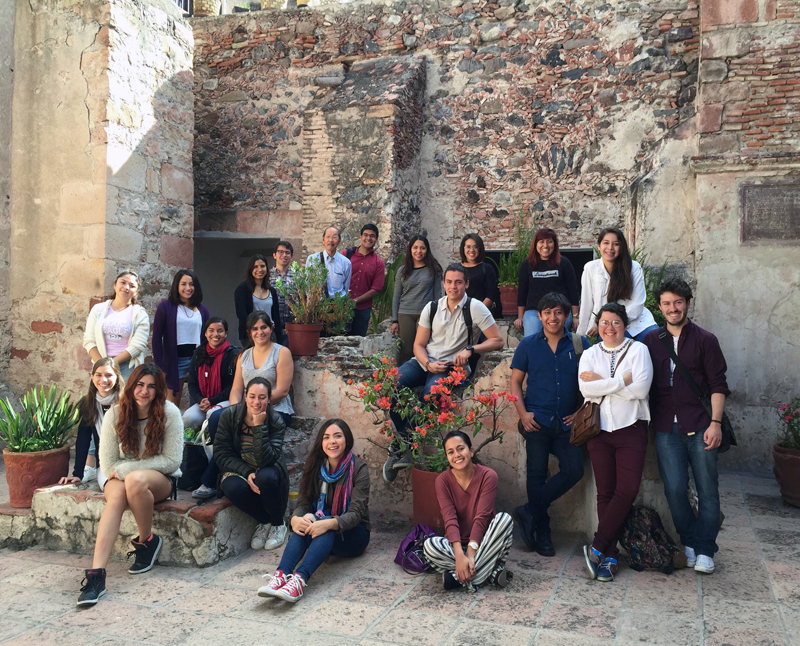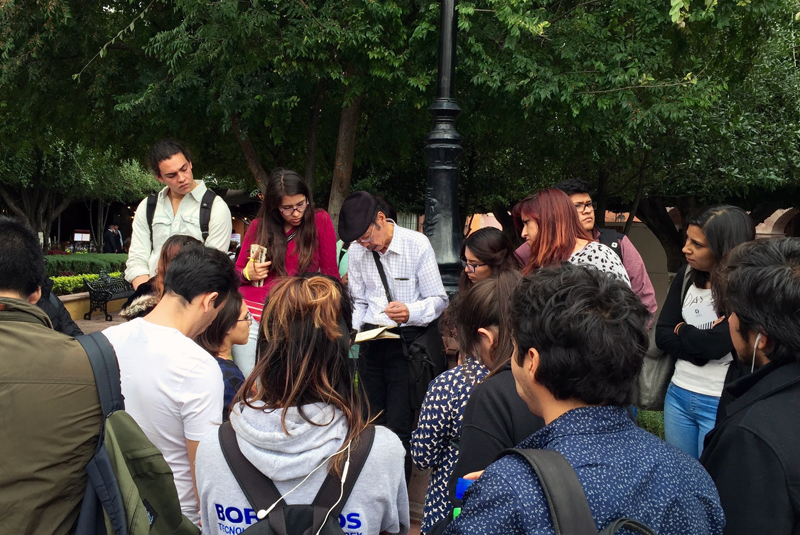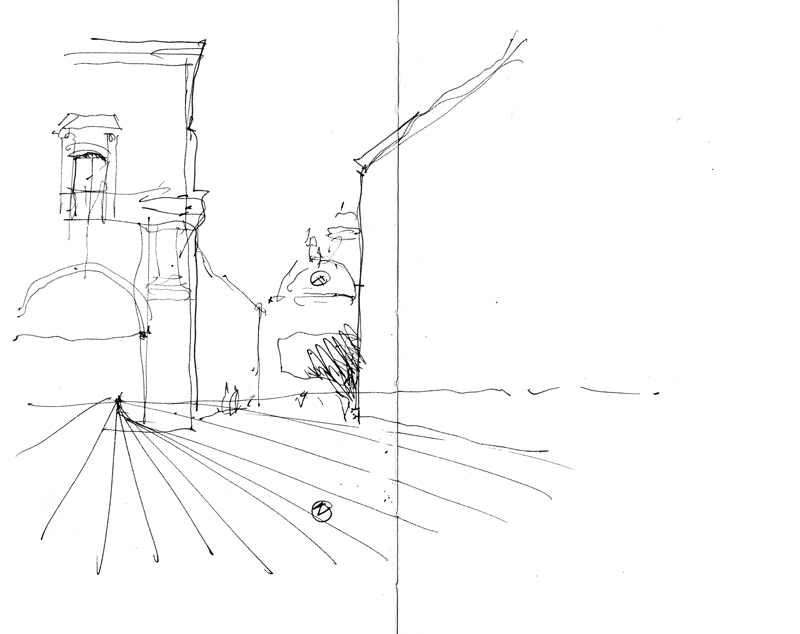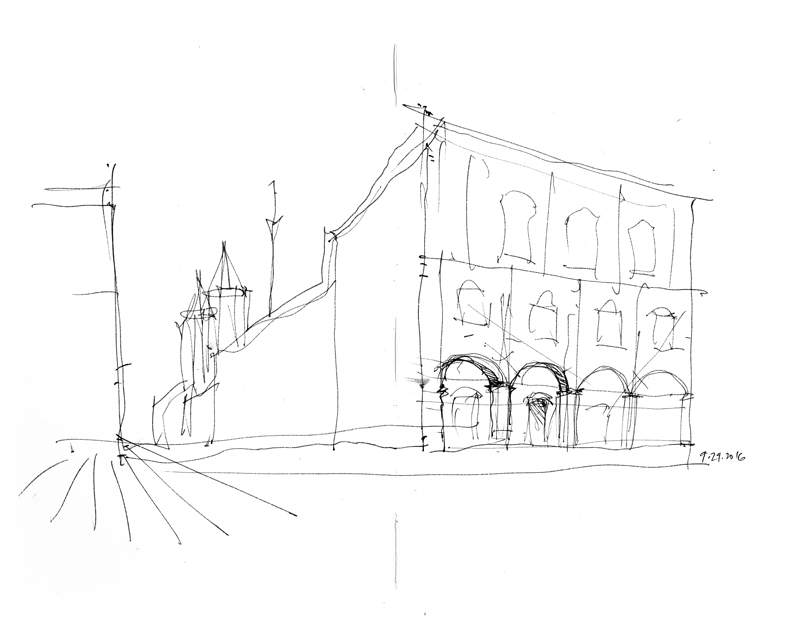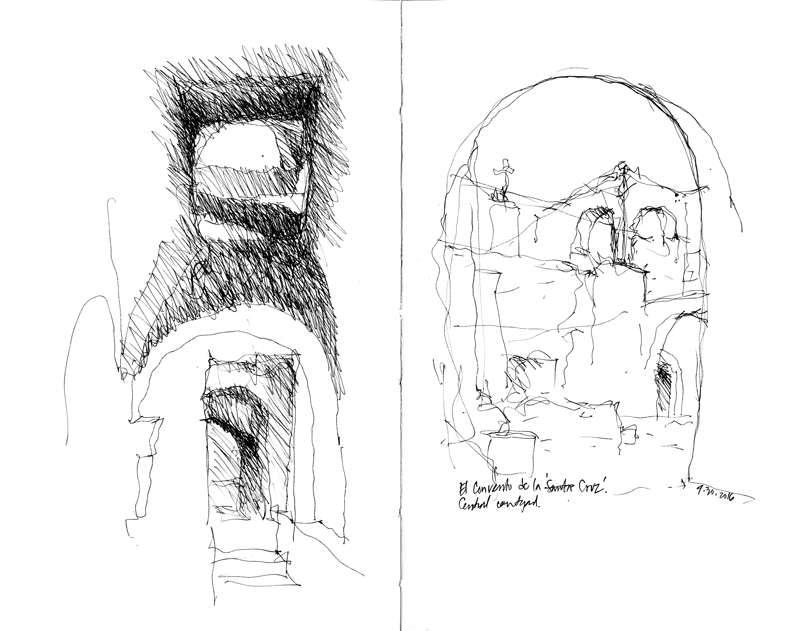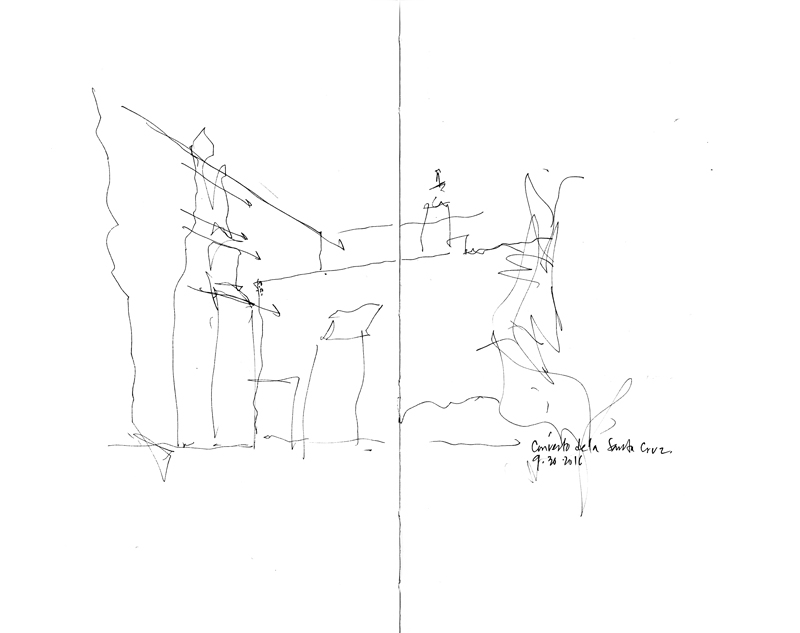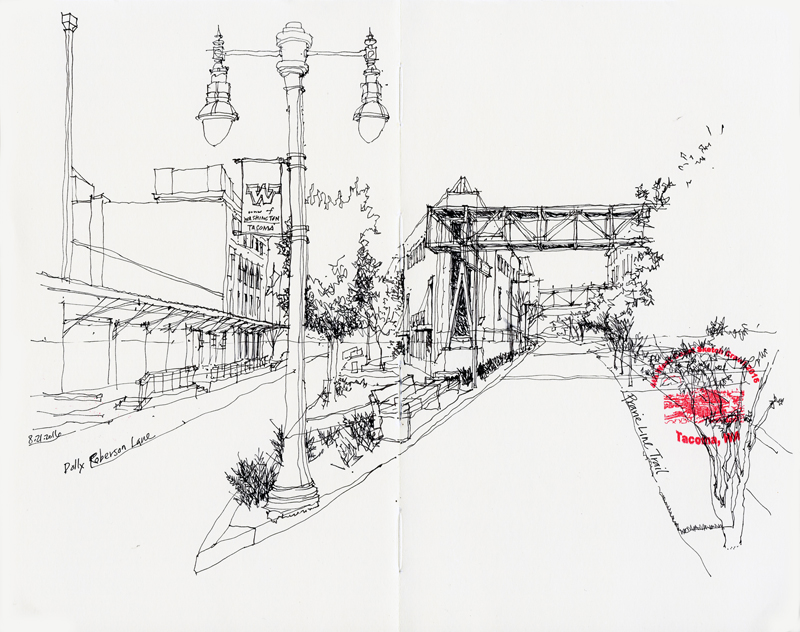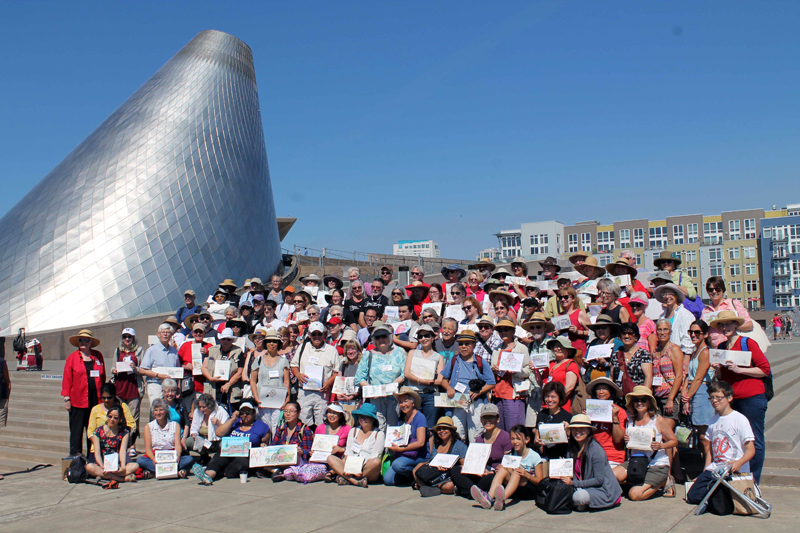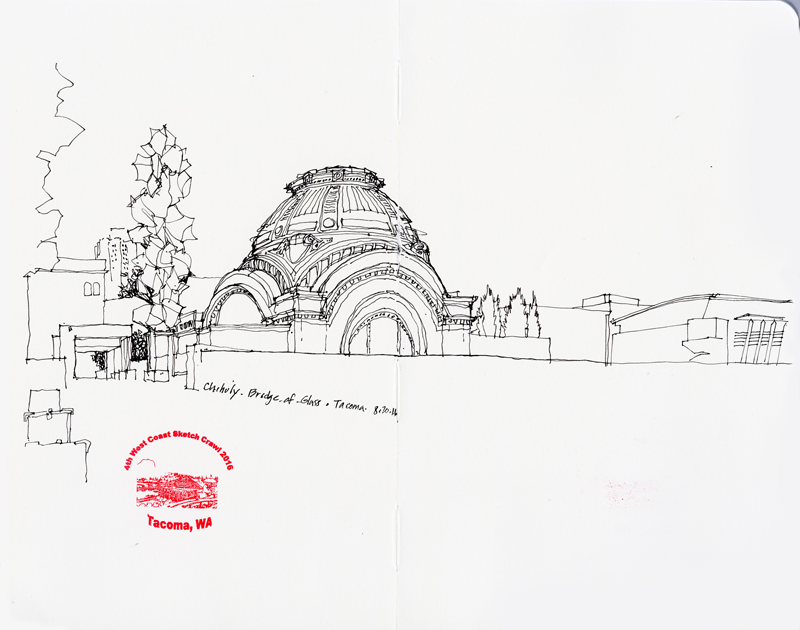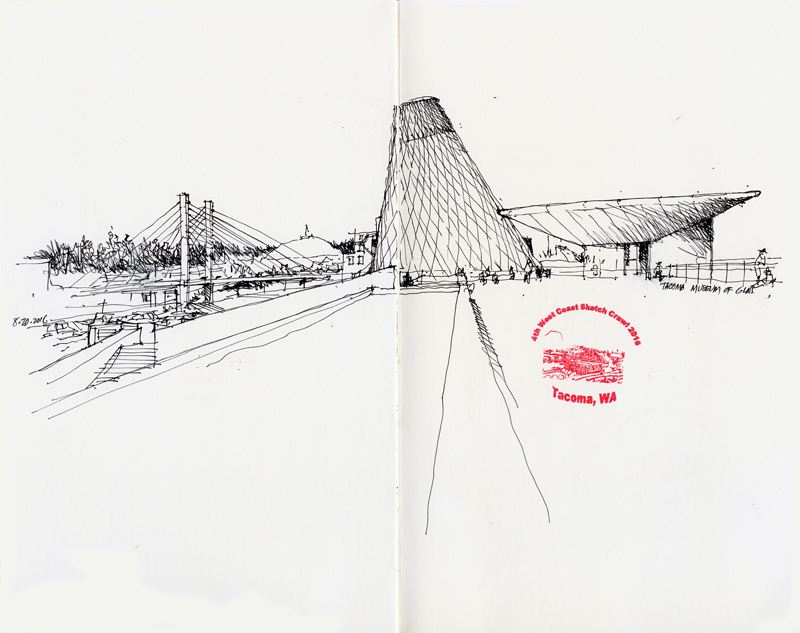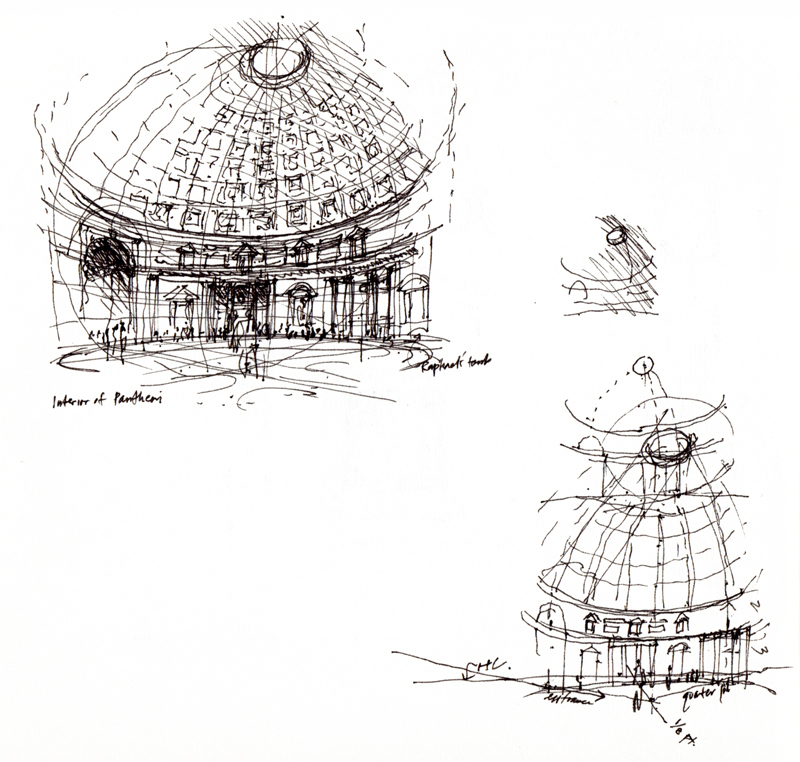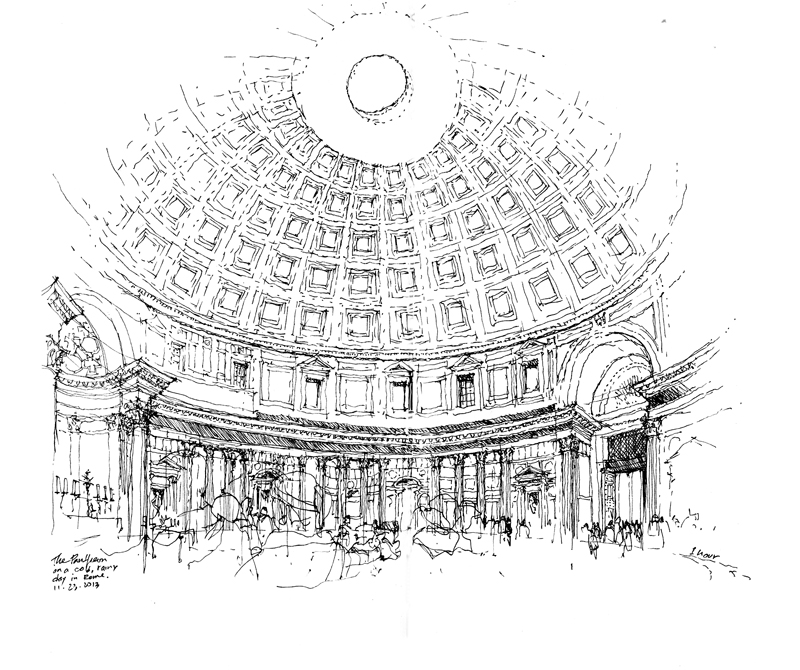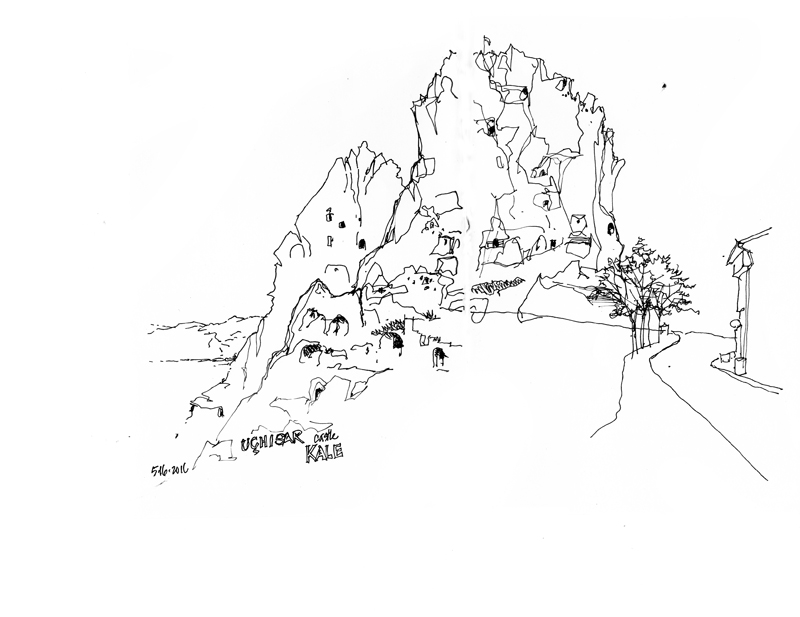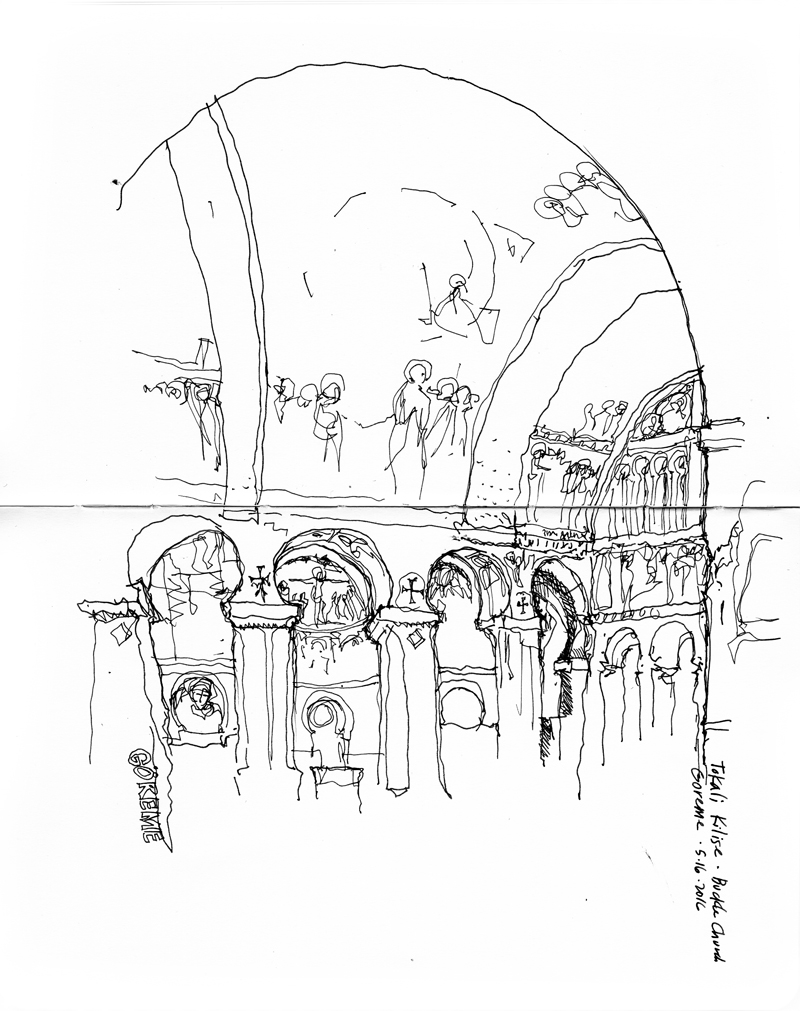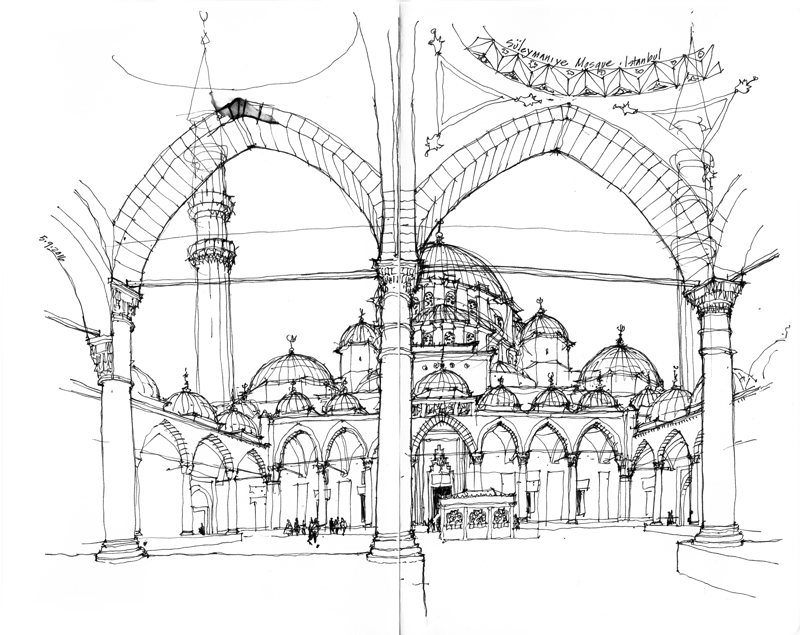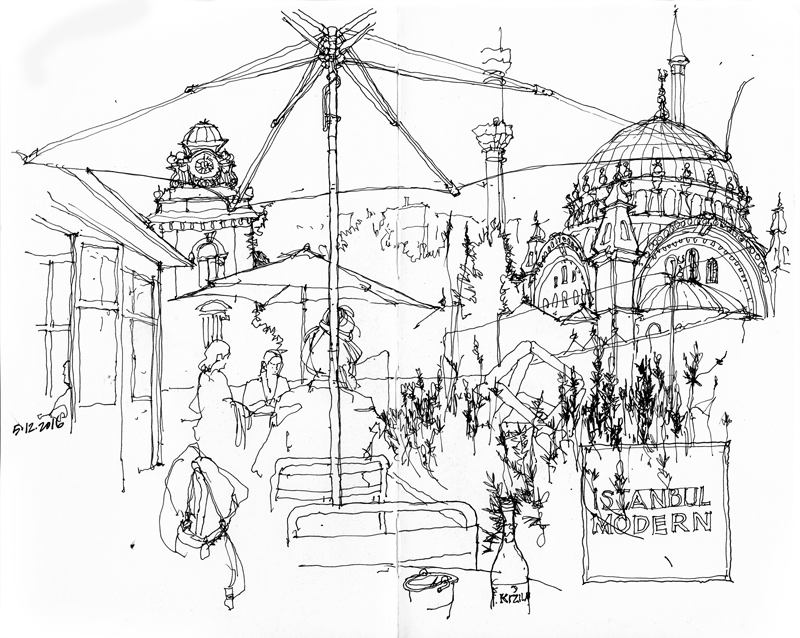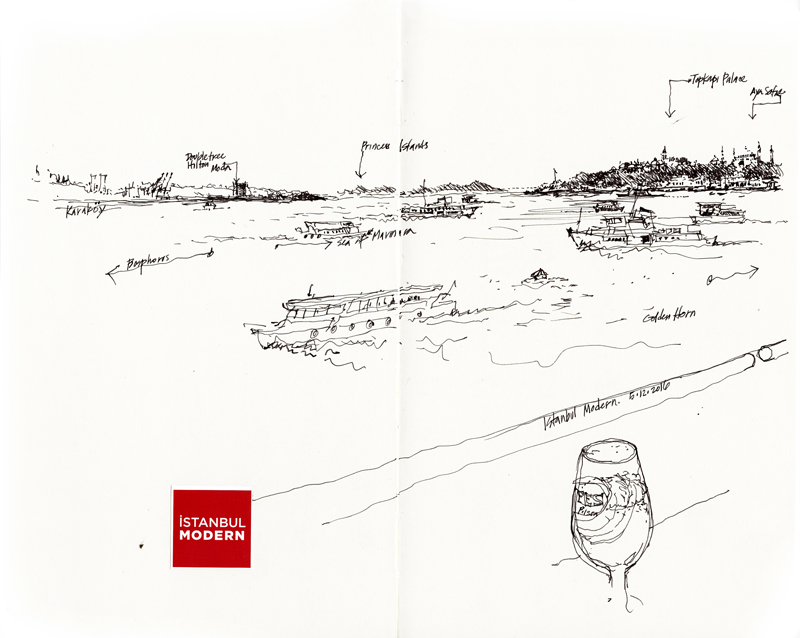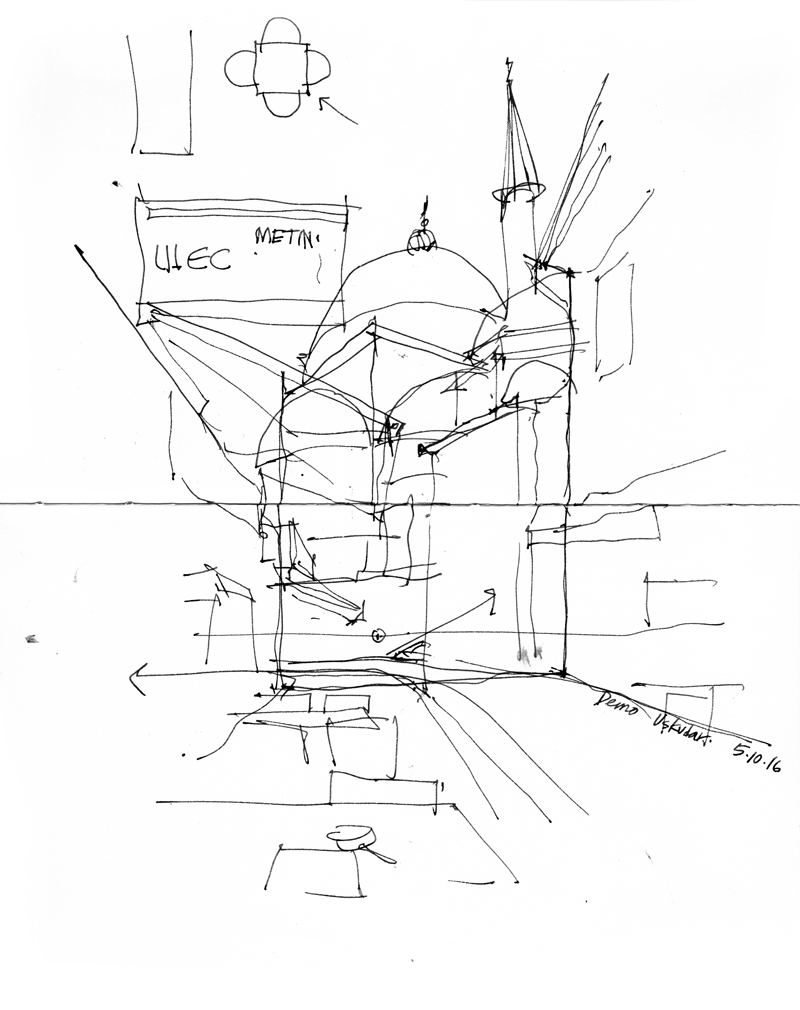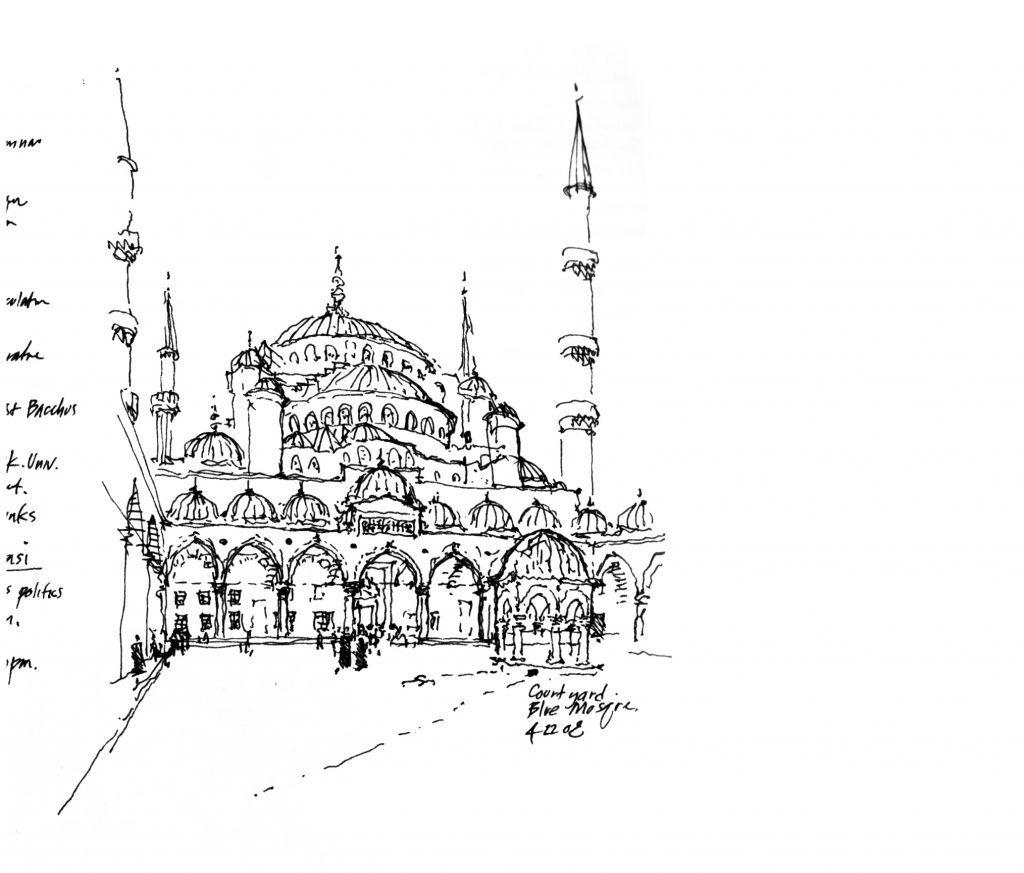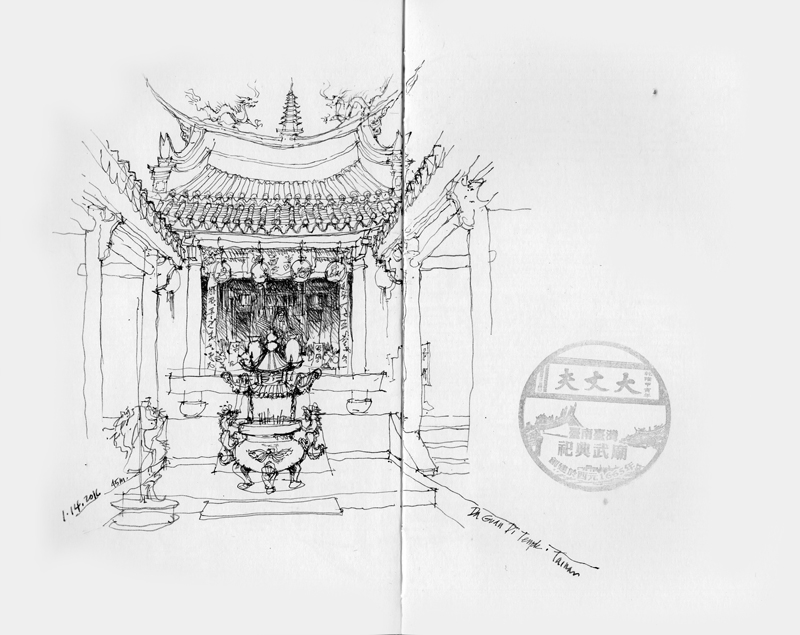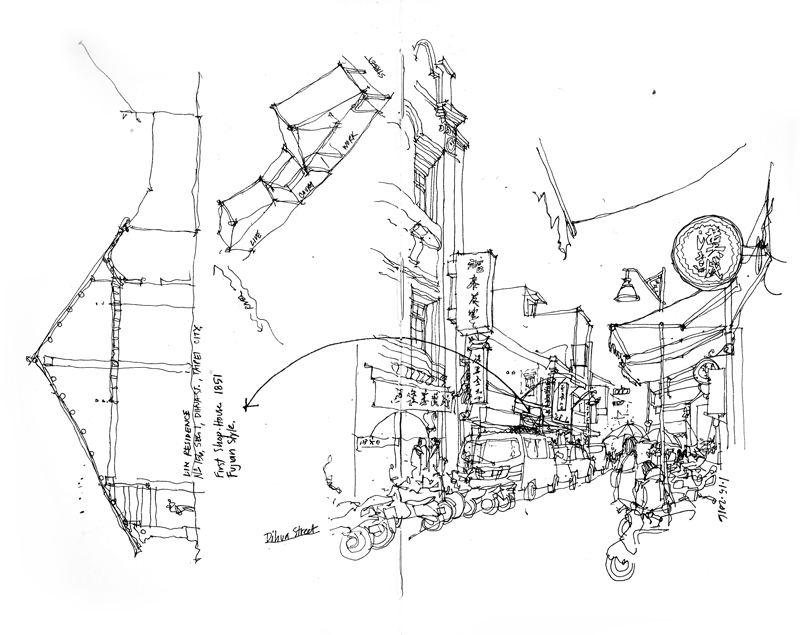Just returned from spending a few wonderful days in Santiago de Querétaro, a colonial town founded in 1561 by Franciscan priests in the high desert country north of Mexico City. There I led a group of students from the Tecnológico de Monterrey on a drawing tour of the Centro Historico, a UNESCO World Heritage site. Below the group photo taken in a courtyard of the Convento de la Santa Cruz are a few of the quick sketches I did to demonstrate how to compose the perspective structure of the scenes the students were drawing. Many thanks to Professor Paola Gamez Pouzou for her gracious and generous assistance during the two days of workshops.

